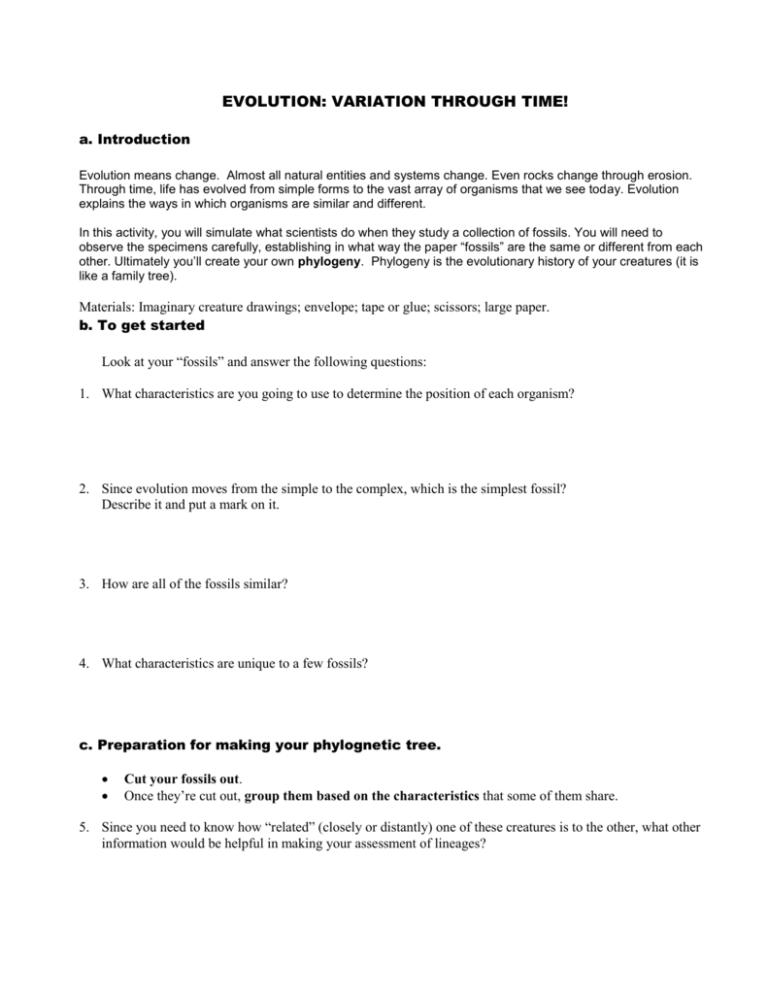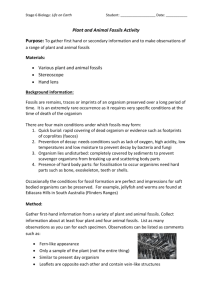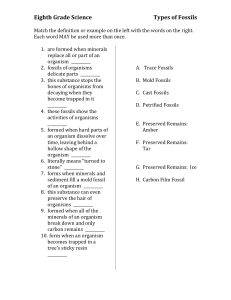EVOLUTION: VARIATION THROUGH TIME
advertisement

EVOLUTION: VARIATION THROUGH TIME! a. Introduction Evolution means change. Almost all natural entities and systems change. Even rocks change through erosion. Through time, life has evolved from simple forms to the vast array of organisms that we see today. Evolution explains the ways in which organisms are similar and different. In this activity, you will simulate what scientists do when they study a collection of fossils. You will need to observe the specimens carefully, establishing in what way the paper “fossils” are the same or different from each other. Ultimately you’ll create your own phylogeny. Phylogeny is the evolutionary history of your creatures (it is like a family tree). Materials: Imaginary creature drawings; envelope; tape or glue; scissors; large paper. b. To get started Look at your “fossils” and answer the following questions: 1. What characteristics are you going to use to determine the position of each organism? 2. Since evolution moves from the simple to the complex, which is the simplest fossil? Describe it and put a mark on it. 3. How are all of the fossils similar? 4. What characteristics are unique to a few fossils? c. Preparation for making your phylognetic tree. Cut your fossils out. Once they’re cut out, group them based on the characteristics that some of them share. 5. Since you need to know how “related” (closely or distantly) one of these creatures is to the other, what other information would be helpful in making your assessment of lineages? d. Creating your fossils’ family tree. Arrange the fossils in a sequence of ordered evolutionary changes. Form a branching design (as in a tree) with at least three branches. The “root” of the tree should be your simplest fossil. 6. What determined the order in which you placed your fossils? Tape your fossils on the piece of paper after you and your partner agree on a final order. Draw arrows between the fossils to show the direction of evolutionary change. 7. Compare your most recent organisms and your oldest organism. How are they different? What might have caused the differences? 8. Speculate on the kind of environment each end branch organism inhabits. Explain the changes to which they might have been adapting. Mark the points of change on your creature sheet. 9. Compare your team’s phlogeny with those of others. If you don’t see how they made their choices, ask them to explain them. How is yours the same and different from the others?








